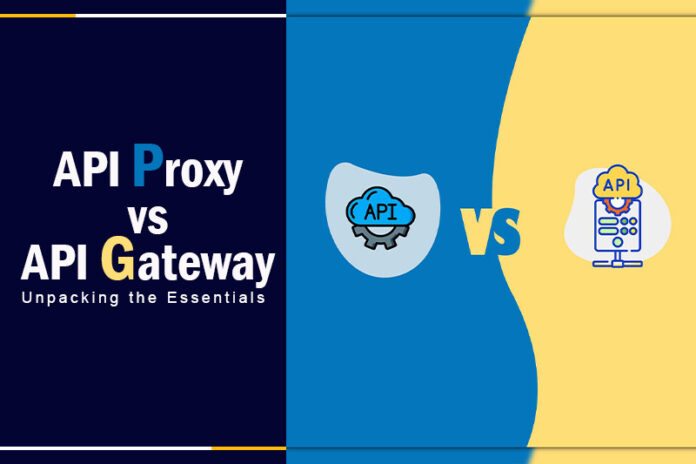Are you struggling to choose the right integration solution for your tech stack? Unsure about the nuances between an API proxy and an API gateway? In today’s dynamic digital landscape, making informed decisions can be the linchpin of successful system architectures. Dive into our comprehensive guide on ‘API Proxy vs API Gateway‘ to unravel their distinctions, benefits, and which one is tailor-made for your specific needs.
What is an API Proxies?
An API Proxy is a type of server that intermediates between an application and a backend service. It represents the API instead of an individual, just like the legal notion of a proxy. An API Proxy separates the API’s front end from the backend services and screens all traffic that goes in and out.
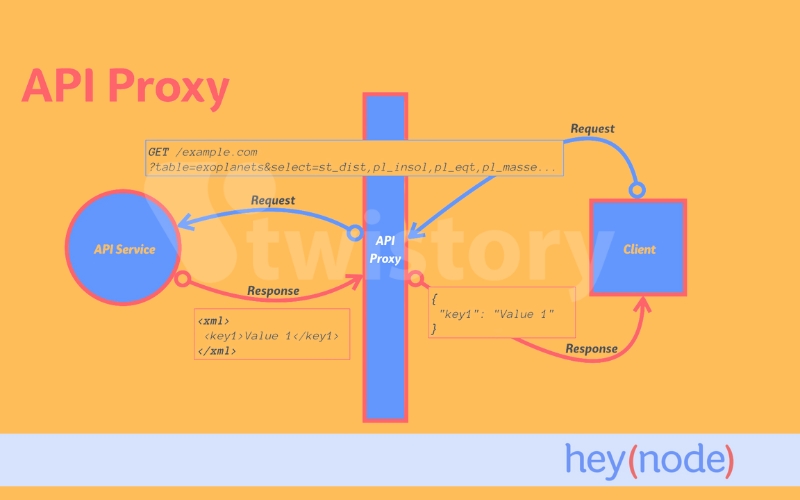
This separation allows the backend services to be modified without affecting the live API. The screening allows for functions such as monitoring, security, routing, and protocol translation.
Note: It is important to note that an API Proxy needs an existing API, while some API Gateways can help create a new API.
Notable API Proxies
- Apigee API Proxy: A leading name in the API landscape, Apigee offers powerful management tools, allowing developers to seamlessly design, secure, and analyze APIs.
- Mashery Proxy: A heavyweight in the API realm, Mashery provides robust solutions tailored to enable the creation, packaging, and distribution of APIs, catering to a wide range of enterprise needs.
- Nginx (Open Source): Not just confined to web serving, Nginx shines as a versatile reverse proxy for HTTP, HTTPS, SMTP, and other protocols, making it a favorite in the tech community.
- Traefik (Open Source): Emerging as a dynamic, cloud-native router, Traefik, built on Go, is acclaimed for its auto-configuration capabilities, especially in environments rife with microservices.
What is an API Gateway?
An API gateway is a type of server that acts as an intermediary between an application and a backend service. An API gateway can provide a customized interface for the application, and perform various functions such as data transformation, security, routing, caching, and more.
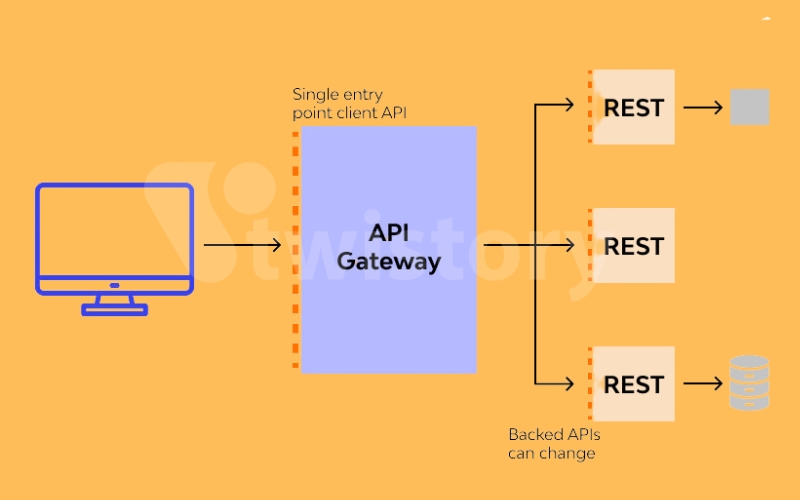
An API gateway can also hide the complexity and details of the backend service from the application, and shield the application from any changes in the backend service.
An API gateway is useful for applications that use microservices architecture, where the application is composed of multiple independent services that communicate with each other. An API gateway can simplify the communication between the services and the clients, and provide centralized management and control of the APIs
Yet, what sets API Gateways apart include:
- Advanced Security Protocols: Offering more sophisticated layers of protection.
- Composition: This allows for a seamless combination of different services.
- Custom API Integration: Tailored specifically to fit unique requirements.
- Load Balancing: Distributing incoming traffic efficiently across multiple servers.
- Caching: Storing frequently used data for rapid access and improved performance.
- Request Shaping & Management: Organizing and prioritizing incoming API requests.
- Static Response Handling: Managing fixed, unchanging responses effectively.
- Throttling: Controlling the rate at which API requests are processed.
For those utilizing a myriad of microservices that come with overlapping features, say for example authentication, an API Gateway acts as a central hub. This centralized structure negates the need to authenticate each separate microservice, streamlining the process considerably.
Notable Types of API Gateways
- Axway API Gateway:
A veteran in the tech world, Axway offers an efficient API Gateway that assists businesses in managing, delivering, and securing APIs. It’s a powerful solution tailored for enterprise-level operations.
- Kong API Gateway:
Originating as an open-source project, Kong has matured into a go-to API Gateway solution. Recognized for its modularity and scalability, it’s adaptable for both startups and large enterprises.
- Amazon API Gateway:
From the tech giant Amazon Web Services (AWS) comes this robust API Gateway. It’s specifically designed for serverless architectures, offering seamless integration with Lambda functions and other AWS services.
- IBM API Connect:
IBM’s offering in the API space is not just about connectivity; it’s an integrated tool to create, manage, and secure APIs. It boasts advanced analytics and a user-friendly dashboard for API management.
- Microsoft Azure API Management:
A testament to Microsoft’s commitment to cloud-based solutions, this tool ensures seamless API management within the Azure ecosystem. It’s ideal for businesses heavily invested in Microsoft technologies.
- Apigee:
Now under Google Cloud, Apigee is an elite API management platform known for its advanced analytics, developer portal, and security protocols.
- Express Gateway (Open Source):
For developers who love the simplicity of Express.js, Express Gateway transforms the framework into a powerful API Gateway. It’s a minimalist yet capable solution for modern web applications.
- Zuul Gateway (Open Source):
Originating from Netflix’s tech stack, Zuul is well-suited for cloud-based microservices. Its dynamic routing capabilities and filters make it a prime choice for complex ecosystems.
- Tyk Gateway (Open Source):
Tyk stands out with its rich feature set and flexibility. From rate limiting to analytics, Tyk offers a comprehensive suite for API management without a hefty price tag.
API Proxy vs API Gateway: What’s the Difference?
At first glance, an API proxy and an API gateway might seem similar, given that both act as intermediaries granting access to backend services. At its core, both API Gateways and API Proxies are designed to bridge the gap between the front and back ends of an API, ensuring functions like monitoring, basic security measures, route management for requests, and even protocol translations.
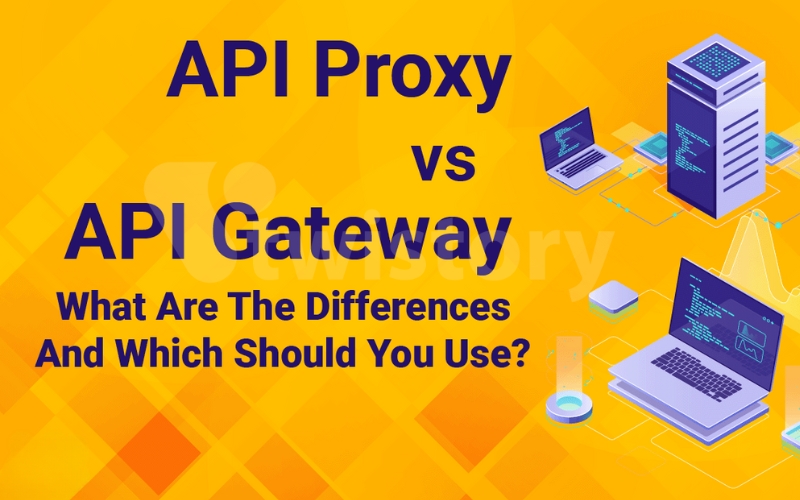
Yet, on closer inspection, the distinction becomes clearer based on their functionalities and purposes.
| API Proxy | API Gateway | |
| Core Purpose | Primarily serves as a facade for backend services, offering a simplified version of those services while managing basic security and request-response handling. | Beyond just being a facade, it acts as an enhanced intermediary, providing a multitude of features, from security to rate limiting, and even content transformation |
| Use Case | Suitable for straightforward scenarios where the primary need is to expose backend services with minimal added features. | Ideal for complex environments, especially when integrating multiple services, requiring advanced security, or needing detailed monitoring and analytics. |
Should I Use an API Proxy?
Before deciding to use an API proxy, you should weigh the pros and cons and evaluate if it suits your goals and requirements.
Think of an API proxy as a basic version or precursor to the API gateway – it’s more lightweight and offers a foundational set of features, including basic security and monitoring functions. If you’re someone who’s just starting out with APIs or has fairly straightforward requirements, an API proxy might be just the ticket.
However, it’s crucial to understand its limitations. An API proxy might fall short when you require advanced operations, especially in terms of intricate content management, routing, integration of multiple APIs, or advanced security features. Additionally, tasks like data transformation, mediation, or orchestration are beyond its capacity.
Should I Use an API Gateway?
Should you invest in an API gateway? In most cases, the answer leans heavily towards a resounding “yes”. An API gateway serves as a consolidated entryway for multiple APIs, optimizing their performance and security.
Here are the highlights:
- An API gateway centralizes access across various APIs, making management more streamlined.
- With features like rate limiting, it ensures robust security measures. It’s instrumental for securing microservices and their interactions, especially when engaging with external consumers.
- While an API gateway encompasses all the capabilities of an API proxy, it doesn’t stop there. It adds a plethora of additional features, enhancing security and monitoring.
- No need to initiate with a pre-existing API. With an API gateway, you can integrate multiple disparate services, molding them into a cohesive, modern API.
- Beyond the rudimentary functions of an API proxy, an API gateway dives deep. It offers service orchestration, data transformation, mediation, caching, load balancing, analytics, and safeguards against Denial of Service (DoS) attacks. Furthermore, it integrates sophisticated content and transport security features, standing miles ahead of a standard proxy.
In the continuum of API solutions, an API gateway plays a pivotal role in enhancing the entire lifecycle of an API, making it an essential tool for those serious about their API management.
An API Proxy Can Act As An API Gateway, But a Gateway Is Better
While an API proxy offers an excellent starting point for those dipping their toes into basic API implementations, a more extensive enterprise API landscape undeniably benefits from the prowess of an API gateway. Let’s delve into why.
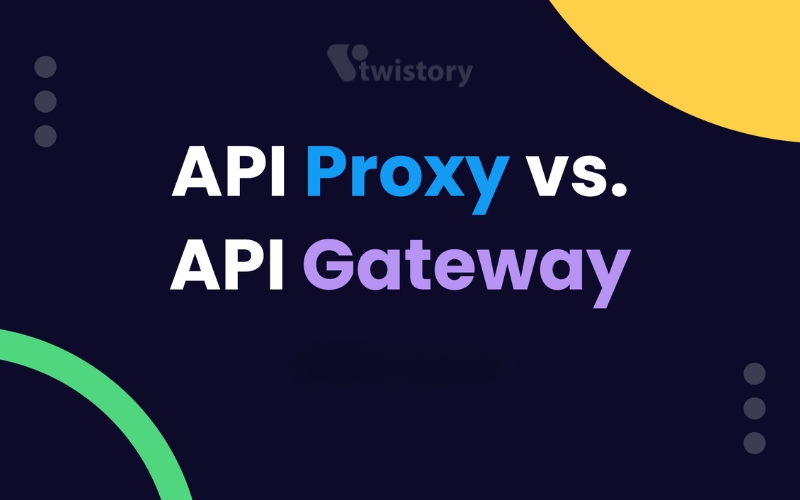
An API gateway is essential for managing and securing a large number of APIs. It provides a centralized platform for managing access to APIs, configuring security policies, and monitoring performance. An API gateway can also help to integrate APIs from different sources, making it easier to provide a unified API experience to consumers.
Mediation
Consider the scenario of proxy servers facilitating tasks like SOAP to REST mediation. How do they manage it? They rely on custom code, which clients either need to maintain or cough up extra cash for whenever modifications arise.
Enter an API gateway. It empowers you to metamorphose your pre-existing services into advanced APIs, equipped with top-tier security and monitoring, all within a snap. Opt for a mere proxy for the same task? Brace yourself for weeks, perhaps even months, of coding. And this cycle repeats with every tweak you aim to introduce.
Orchestration
Orchestration remains outside the purview of a proxy server. In contrast, an API gateway excels in this domain.
Utilizing an API gateway, you can choreograph your API orchestration, meticulously determining service delivery for each request and crafting service calls accordingly. For instance:
- Receive a query for specific catalog details.
- Employ a lookup function to pinpoint the requisite data.
- Initiate a call to a service harboring a portion of the sought-after data.
- Rely on the received data or in-built logic to generate subsequent calls, accumulating more detailed information.
Integration
When it comes to integration capabilities, a proxy server lags behind. Here’s where the API gateway shines even brighter.
Envision utilizing an API gateway in lieu of an ESB as your integration fulcrum. The advantages are evident: heightened efficiency, fortified security, and a seamless avenue to rejuvenate your applications.
Plus, an API Gateway Can Do Everything a Proxy Can
Leveraging a top-notch gateway, offers the benefit of adaptive optimization based on its usage patterns. Essentially, it can function as an efficient, streamlined proxy, delivering outstanding performance. Thus, it’s vital to select a gateway that intelligently switches to a straightforward proxy mode when needed.
Conclusion
In summary, the intricate dance between ‘API Proxy vs API Gateway’ is essential to understand for any tech enthusiast or professional charting out their integration strategy. Both have their unique strengths, yet their differences are pivotal in choosing the right fit for your requirements. We at Twistory strive to illuminate such technical nuances for our readers. If you found this enlightening, be sure to explore more of our blogs for deeper insights into the ever-evolving world of technology.

